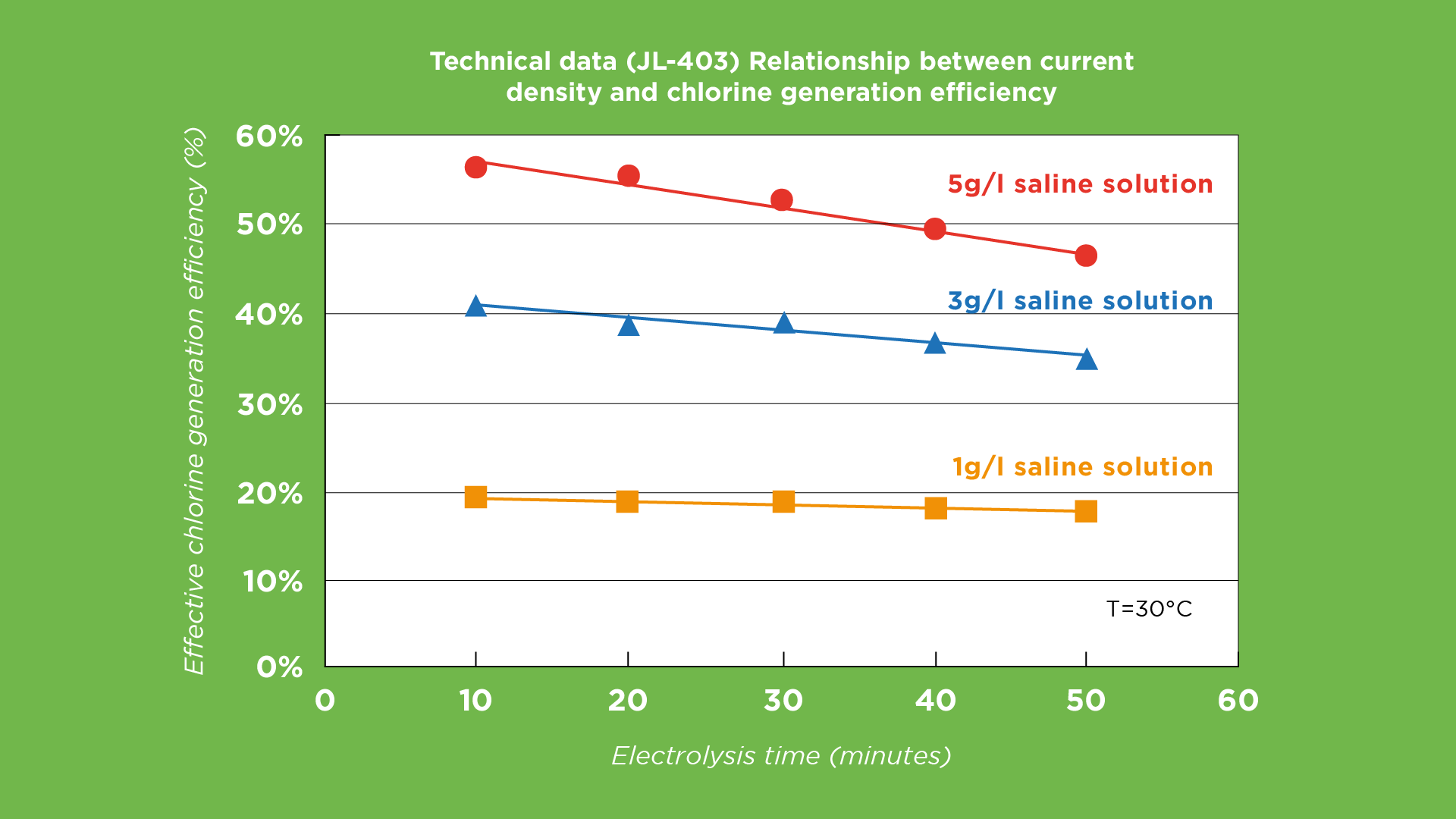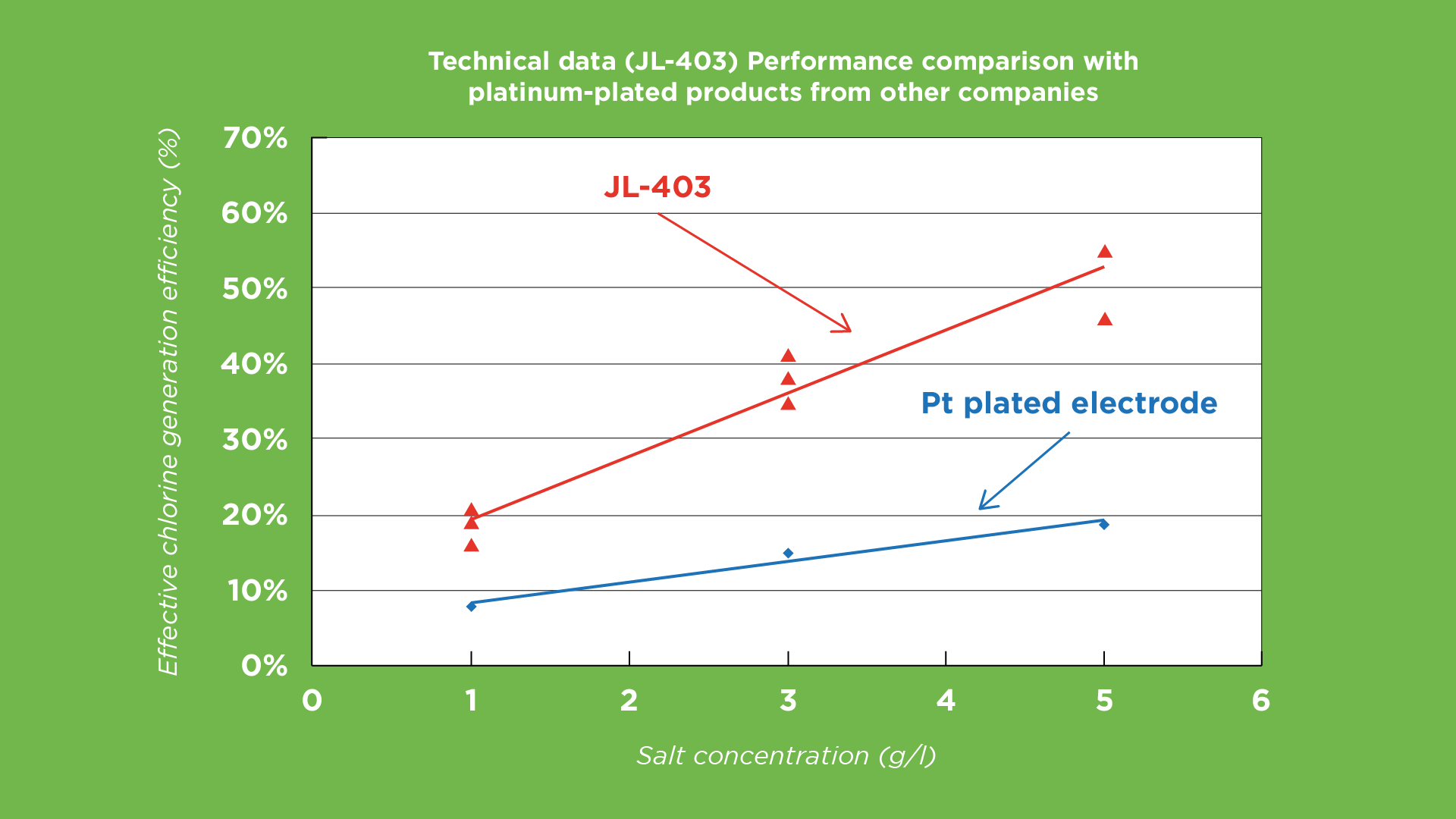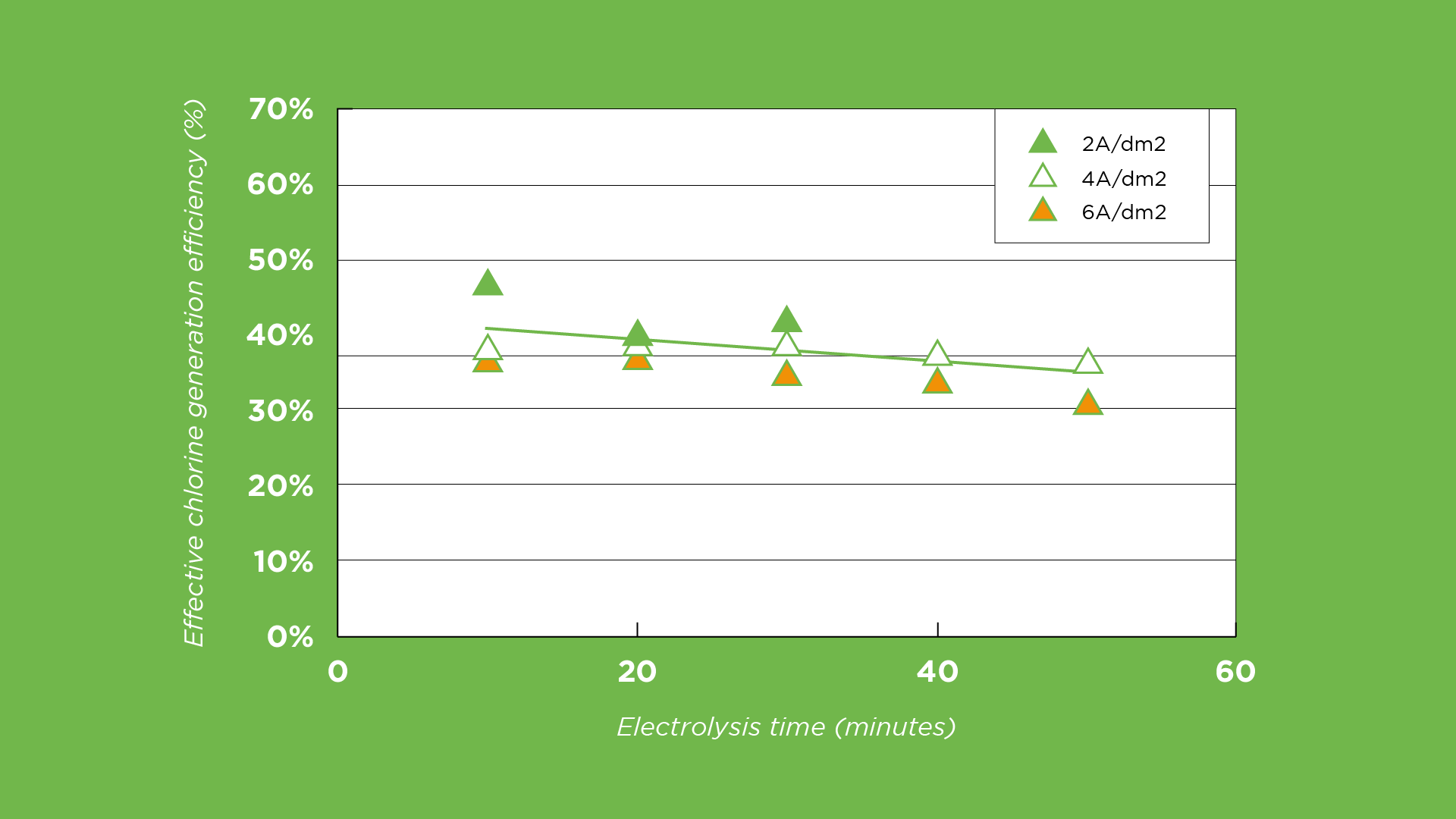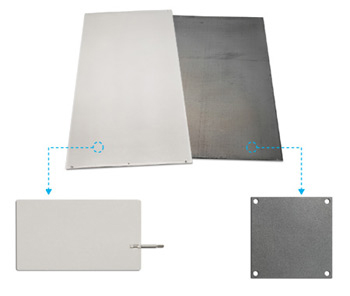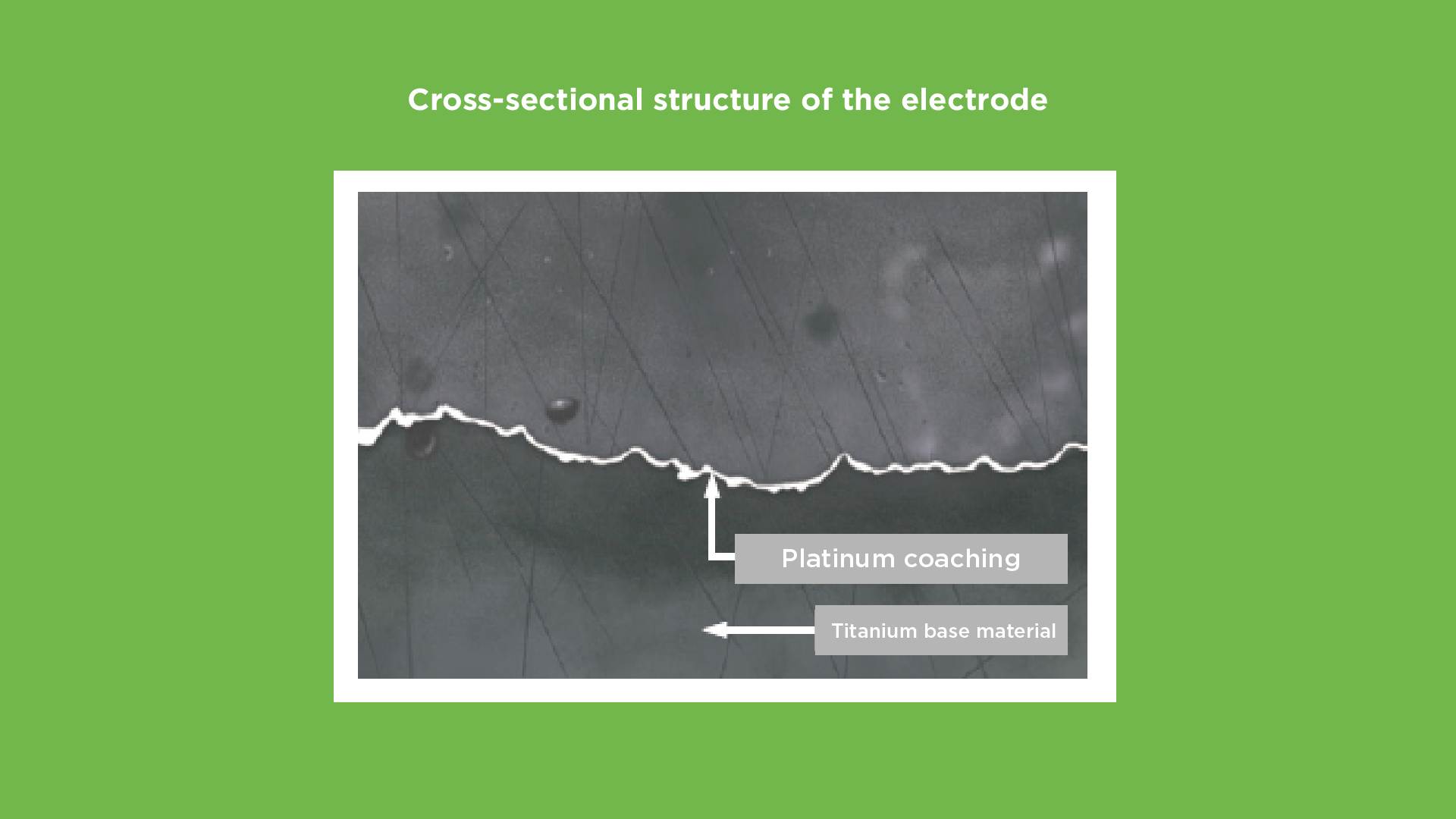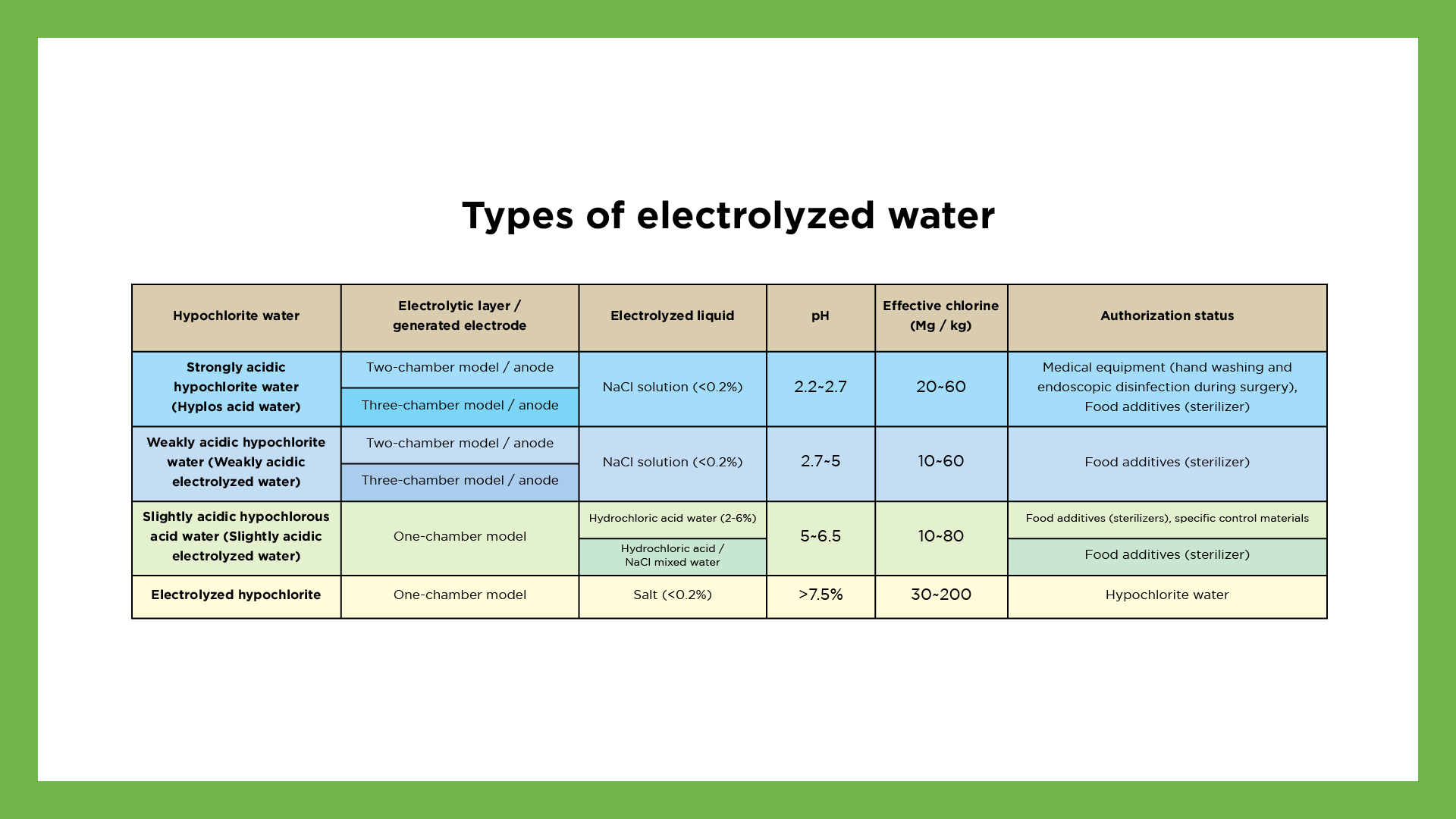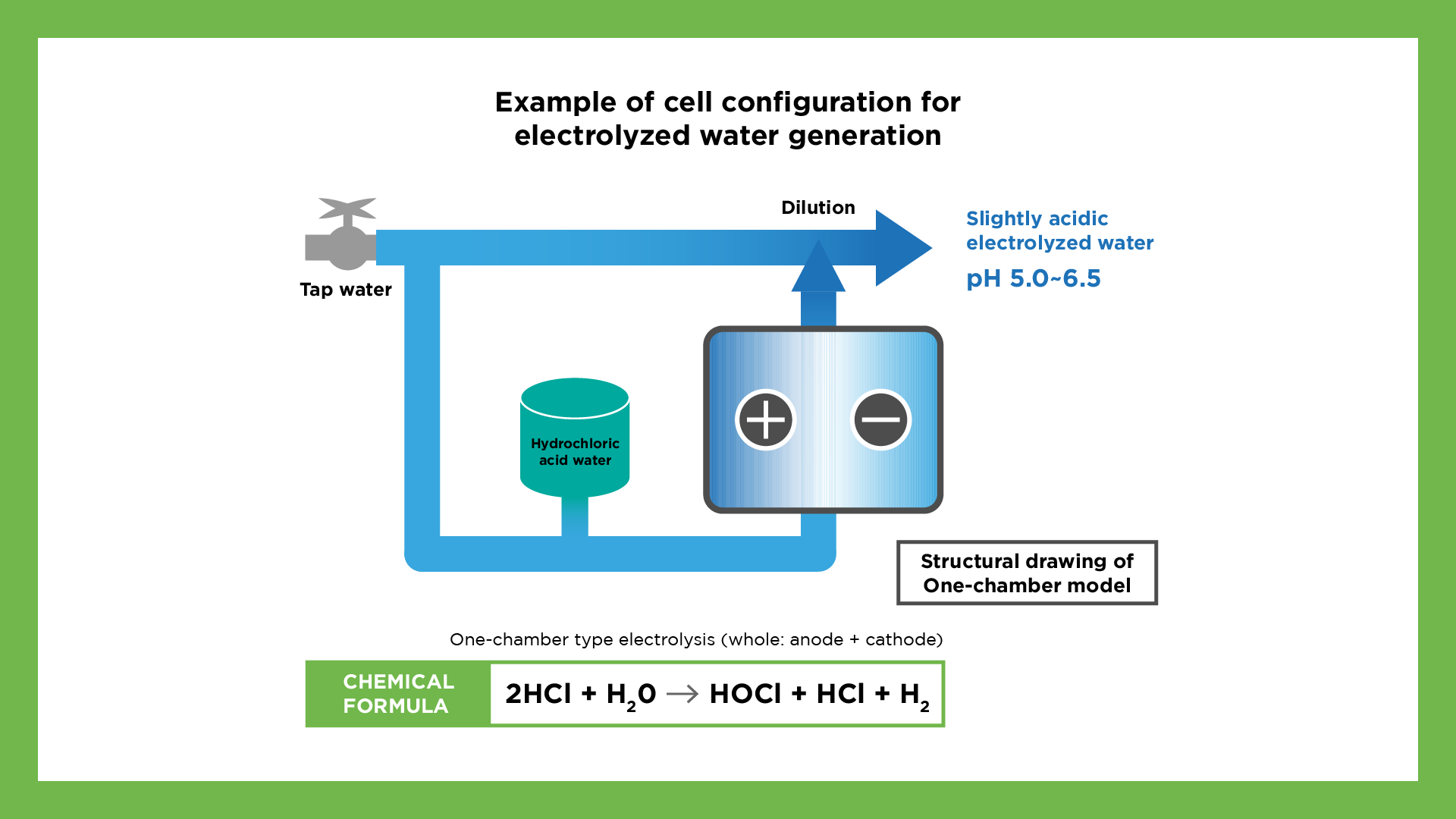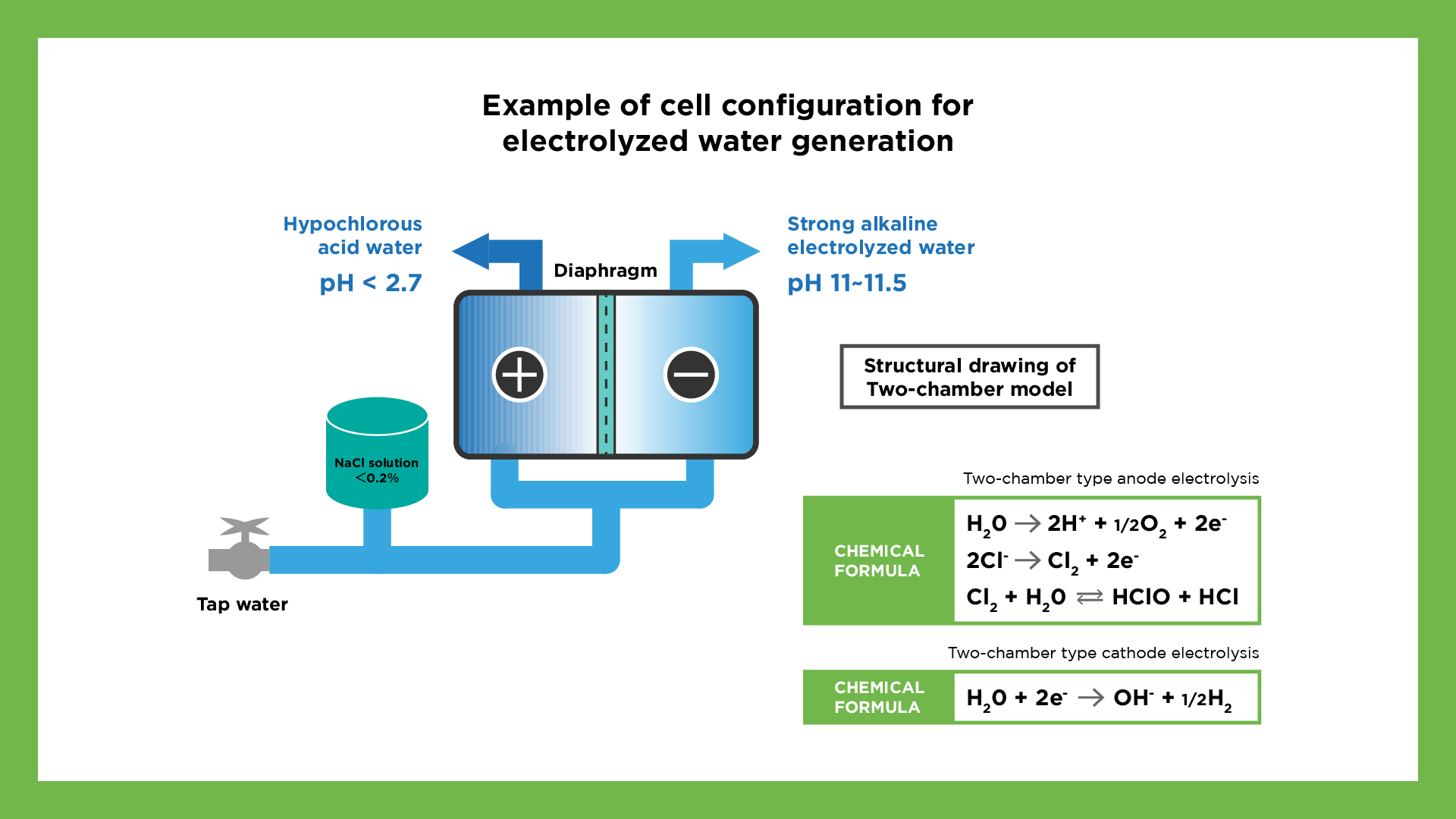The history of electrodes for functional water
In Japan, electrolyzed water such as strongly acidic electrolyzed water, and slightly acidic electrolyzed water, was approved as a food additive in 2002, and alkaline electrolyzed water has been reported to be effective in instances of degreasing and for improving medical conditions, etc. With the establishment of JIS standard household electrolyzed water generators in 2005, and more recently as a countermeasure against infection by COVID-19, electrolyzed water has been the focus of increasing attention.
Features and performance of electrodes
Compared to plated electrodes, there is the presence of crystal surfaces and fine crystal particles which are related to catalytic activity as electrodes, and moreover, the presence of an ultra-thin oxide film caused by heating and burning which is related to corrosion resistance. These elements combine, to give superior performance as electrodes.
・Highly efficient electrolysis is possible at low voltage
Compared to platinum plated products, the intended reaction can be achieved at a lower voltage. Moreover, it is possible to produce acids and alkalis more efficiently.
・Supports dipole inversion
When tap water is electrolyzed, impurities contained in the tap water (e.g., Ca (Calcium) scale) are deposited on the cathode. To remove them, it is necessary to periodically switch the polarity of the anode and cathode to ionize the precipitates and remove them from the electrode's surface. This kind of dipole inversion is possible.
・Long operating life
Compared with plated electrodes, these electrodes are 1.5 to 2 times more durable. The Electrode's operating life varies greatly depending on the electrolytic conditions, and in particular, the frequency of dipole inversion is an important factor for the electrode's operating life. There is also a close relationship between the amount of coating and its operating life, so it is also possible to make proposals that match the electrolytic conditions.
・It is non-toxic, and can be used as drinking water
Since it does not use toxic precious metals such as Ru (Ruthenium), etc., it is possible for it to be used as drinking water (alkaline ionized water, hydrogenated water, etc.).

![[Technical data] [Technical data]](/.imaging/mte/denora/649/dam/denora-japan/product/DSE-fct-water/untitled/jcr:content/DeNora_Graphs_EN_1.png)


